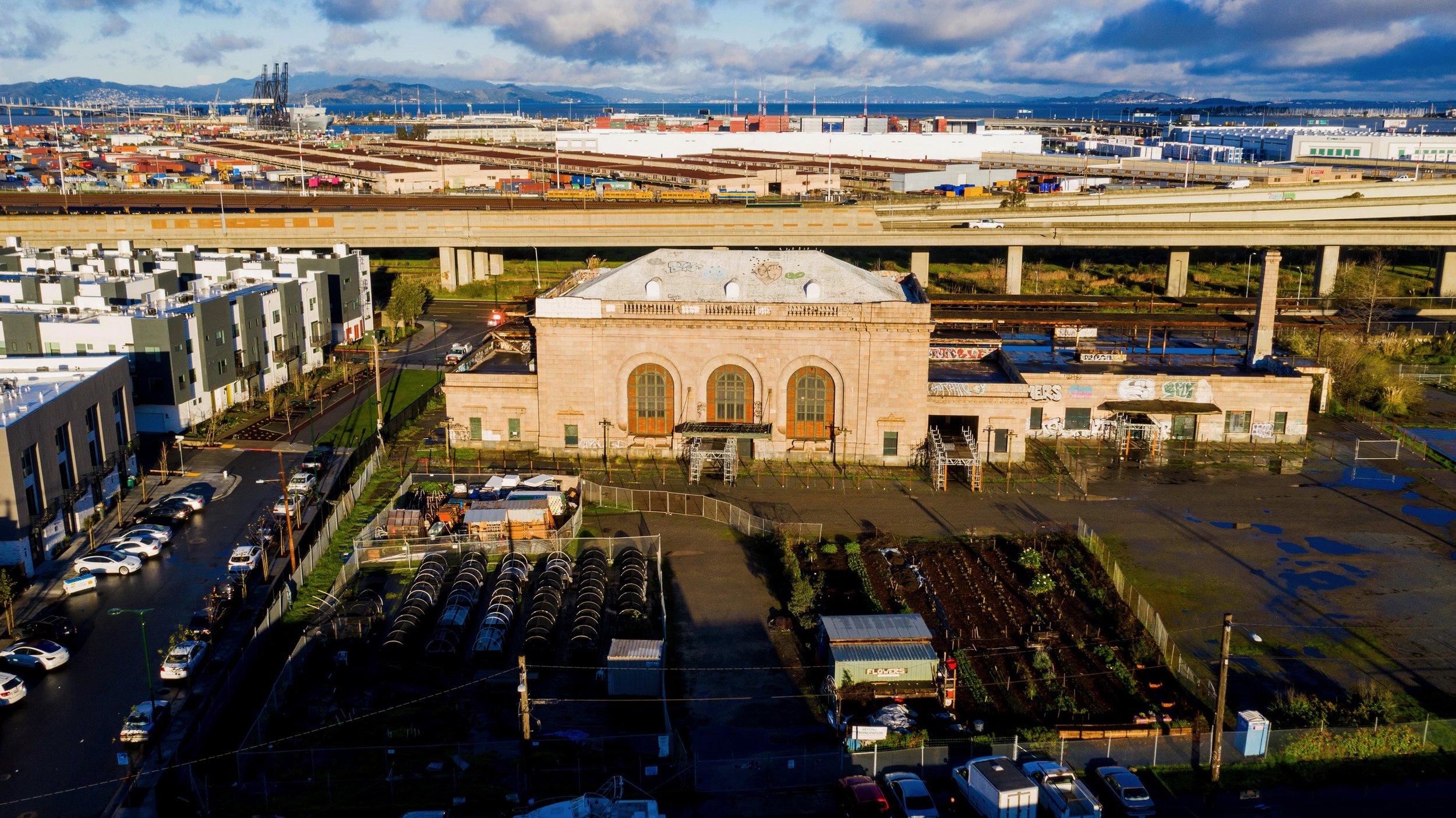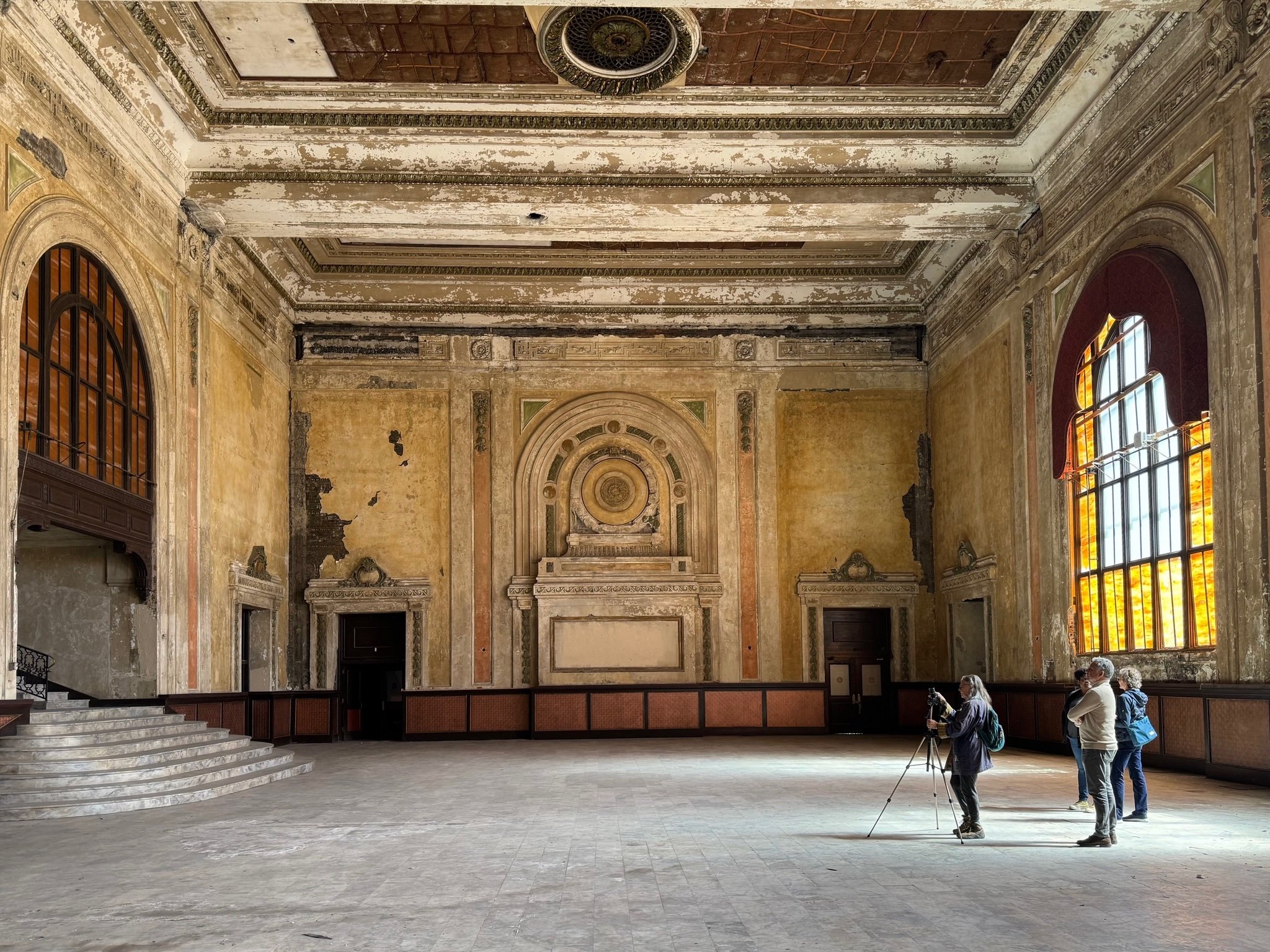
16th Street Station
Overview
Oakland’s 16th Street Station is the grandest railroad station ever built in the San Francisco Bay Area. Constructed in Beaux-Arts style, it featured elevated tracks for interurban electric trains, an early example of intermodal design. Significantly, the station served as the western headquarters of the Brotherhood of Sleeping Car Porters, the first Black union in the United States, spurring the civil rights movement and Black middle class.
The building is threatened with neglect, damaged in the 1989 Loma Prieta Earthquake and long vacant. With new developers, OHA is working to promote less-invasive site planning, sensitive restoration, and sustainable reuse.
We need your involvement. Sign our petition to stay updated, donate to support our National Register of Historic Places listing, and to drive the developers to restore the building.
Recent Press
History
The Station as built, with the main hall, baggage wing at right, elevated interurban train platform behind, and streetcars in front. - Daniel Levy Collection
The Station was a major destination for people moving to the Bay Area and a hub for local transit. Designed by Jarvis Hunt with a 42-foot ceiling, grand windows, terracotta cladding, stone and plaster finishes inside the 13,000 sq. ft. Main Hall and 8,000 sq. ft Baggage Wing, it supported a working-class community in West Oakland and was the western headquarters for America's first Black union.
The Pullman Palace Car Company, with its luxury sleeping cars, hired Black men almost exclusively as porters for its mostly White clientele. They were expected to work 20+ hours/day, provide their uniforms, and earned less than $.25/hour.
In 1925, the porters began to form the Brotherhood of Sleeping Car Porters — based in Chicago. Oaklander C.L. Dellums became a Vice President and took on a large role. The Oakland branch was the most steadfast, had the largest membership, and pursued union efforts under his leadership.
Delegates, 1st Porters’ national convention. At top, C. L. Dellums of Oakland's 16th St. Station, who became the powerful Vice President of the BSCP and later president. - AAMLO Collection
The Brotherhood of Sleeping Car Porters is credited with helping establish the Black middle class in America and spurring the modern civil rights movement. In 1941, the porters threatened to march on Washington to protest employment discrimination (more than 20 years before the March on Washington, where MLK, Jr. made his “I Have a Dream” speech).
In the 1950s and 60s, major infrastructure projects leveled homes and businesses, displacing thousands of mostly Black West Oaklanders. Urban renewal projects included a double decker freeway, a huge regional post office, and a BART line. The disappearance of streetcars and passenger rail travel decline took a toll. In 1989, the earthquake damage forced the station’s closure. The last train rolled through in 1994, but the Porters’ Oakland community organizing legacy has continued from the Black Panthers, through labor groups, Moms for Housing, and Occupy Oakland, among others.
Demolition by Neglect
The station was damaged by the 1989 Loma Prieta Earthquake. The rail tracks were removed in 1994, ending Amtrak service. The station is fenced and has received a new roof, but remains seismically unstable, at risk during the next major quake. The USGS estimates a 72% chance of a 6.7 magnitude or greater earthquake in the Bay Area in the next 30 years, so each day is a gamble without seismic work.
If the structure is not stabilized and the big one hits, Oakland and the Bay Area will lose a grand railroad station—the West Coast birthplace for organized Black activism, and the arrival point for generations of migrants from the eastern U.S. and from all over the world. It would not reflect well on the telling of the American Story if the building were to collapse and the place marked only by a historical plaque. West Oakland deserves to tell its story in three dimensions, an opportunity not often provided to a community devastated by urban renewal.
Encroaching Inappropriate Development
Development continually threatens the reuse opportunities. In 2005, approximately 30% of the elevated interurban electric train platform, the first elevated railway platform west of the Mississippi, was demolished to make room for housing.
Commercial developer City Ventures recently purchased the site. Their early plans are to mothball the station, building tightly around it.
Delivery access, parking accommodation, and visual access to the Baggage Wing, main station, and tower would be drastically limited. No restoration or reuse plan is shown.
We hope to work with the developer and community to come up with a plan to rehabilitate the historic station.
Saving the Station
After 34 years of advocacy, Oakland Heritage has advocated to avoid insensitive development and for a holistic plan. The station is ripe for reuse with 600+ housing units built nearby and growing community energy.
Preservation involves securing and restore the buildings, so that community activities that already existed there can resume. These activities included: Musical events, raves, opera, theater, music videos, film location (Hemingway & Gellhorn, Rent, Funny Lady), weddings, historic tours, artistic events, outdoor urban agriculture, food events, celebrations. Other cities have done it too. So can we.
How can we save it?
Reactivation
Main Hall (13,000 sq ft, 42 ft ceilings) – Entertainment and event space. Exhibits on station’s history and the Pullman Porters.
Baggage Wing (8,000 sq ft) – Artist housing; retail; local small business incubators; movie studio; community technology hub or office.
Station Plaza – Flexible use: parking, farmers’ market, gathering.
Interurban Platform (15,000 sq ft)— Elevated indoor/outdoor space
Signal Tower – Exhibit space
Phased Approach
The project can be done in phases, to reduce complexity and cost
Phase 1: stabilization—seismic retrofit, remediation, exterior restoration.
Phase 2: interior restoration, tenant improvements. (2A: Baggage Wing. 2B: Main Hall)
Phase 3: Signal Tower and Interurban Platform
Funding
Major funding will be unlocked through the Station’s listing on the National Register of Historic Places. Sources include federal historic tax credits, federal New Markets tax credits, California historic tax credits, grant funds, developer investment, capital campaign, African American Cultural Heritage Action Fund, North American Railway Foundation, Greenhouse Gas Reduction Fund.
Oakland’s Appetite
Oakland citizens have the appetite and means for large reuse projects, as shown by successful restorations of 1912 Kaiser Convention Center and 1928 Fox Theater. However, West Oakland has struggled for traction on this key project, despite widespread community support.
Part of a District
Proximity to the nearby African American Museum & Library and much of the existing Black history programming in the area creates great synergy. AAMLO holds significant materials related to the station and the porters. The station is the terminus of the city’s designated Black Arts Movement and Business District which extends to Lake Merritt. Additional new energy exists in the area with the Oakland Ballers, Prescott Market, and the West Oakland Link.
We need your help!
We cannot save the Station on our own, so please get involved with us!
Sign our petition to let the developers know people are watching and expect results
Become a member of Oakland Heritage Alliance to enable us to expand our organizing infrastructure
Make a tax-deductible donation to Oakland Heritage Alliance to enable us to hire a social media consultant, hire a historic preservation architect, to complete the National Register Application, or to get the word out via printed materials.
We have postcards on how to get involved. Can you help us to distribute them and to get the word out?
Contact your local elected officials to tell them about the station and that it is a priority.
Join our effort! We meet every Monday at 12 noon on Zoom.
Images

The Signal Tower, Elevated Platform, and Amtrak Train
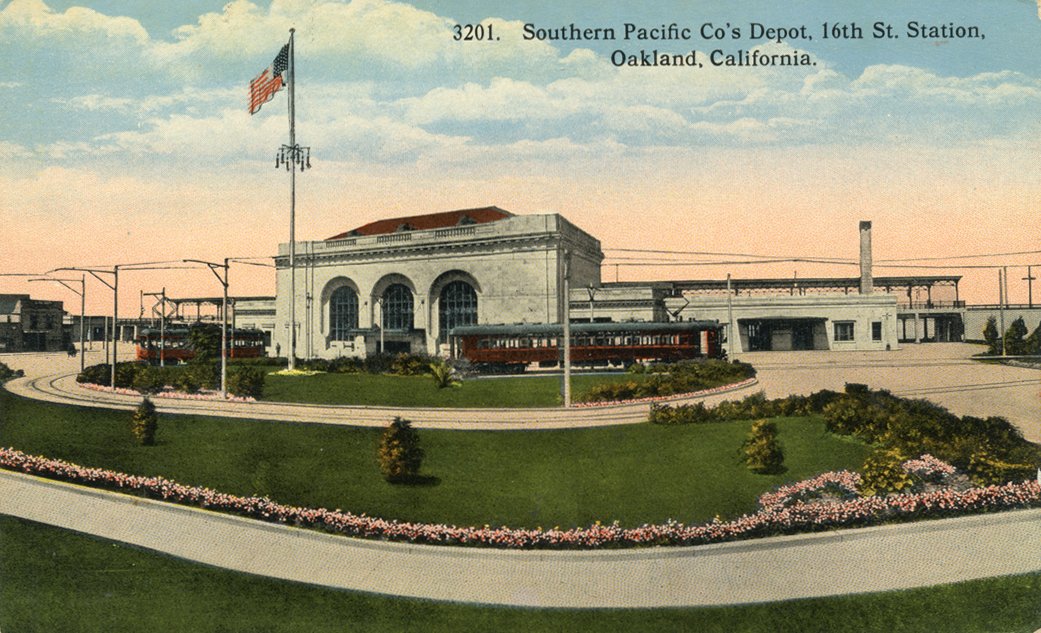
The Station as built with the main hall, baggage wing, elevated platform, and streetcars in front

The Signal Tower

The front entry

Delegates, 1st Porters’ national convention. At top, C. L. Dellums of Oakland's 16th St. Station, who became the powerful Vice President of the BSCP and later president. - AAMLO Collection
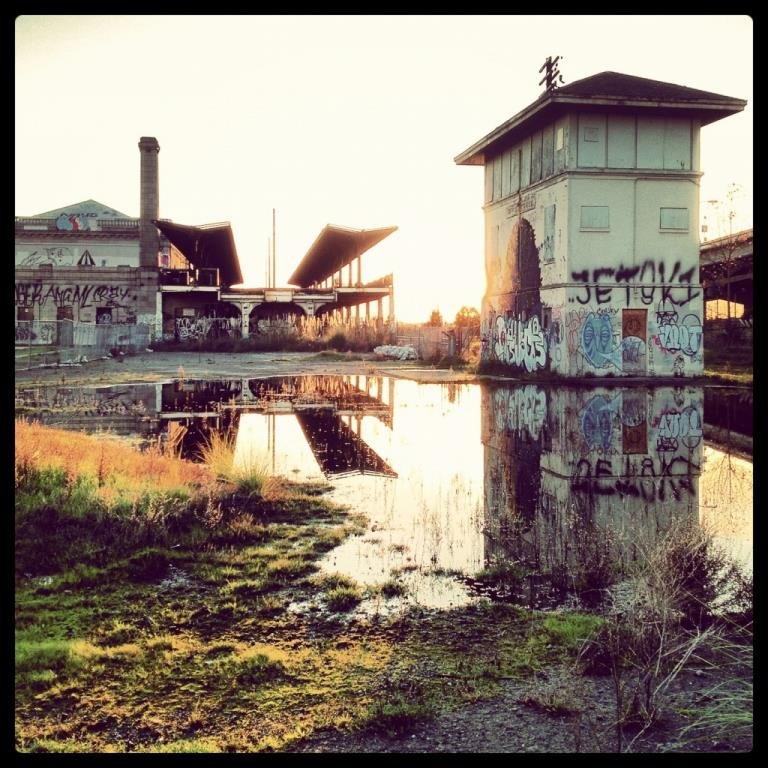
The Station ruins at Golden Hour

Waiting Room

People choose 16th Station to mark pivotal moments in life, such as a wedding
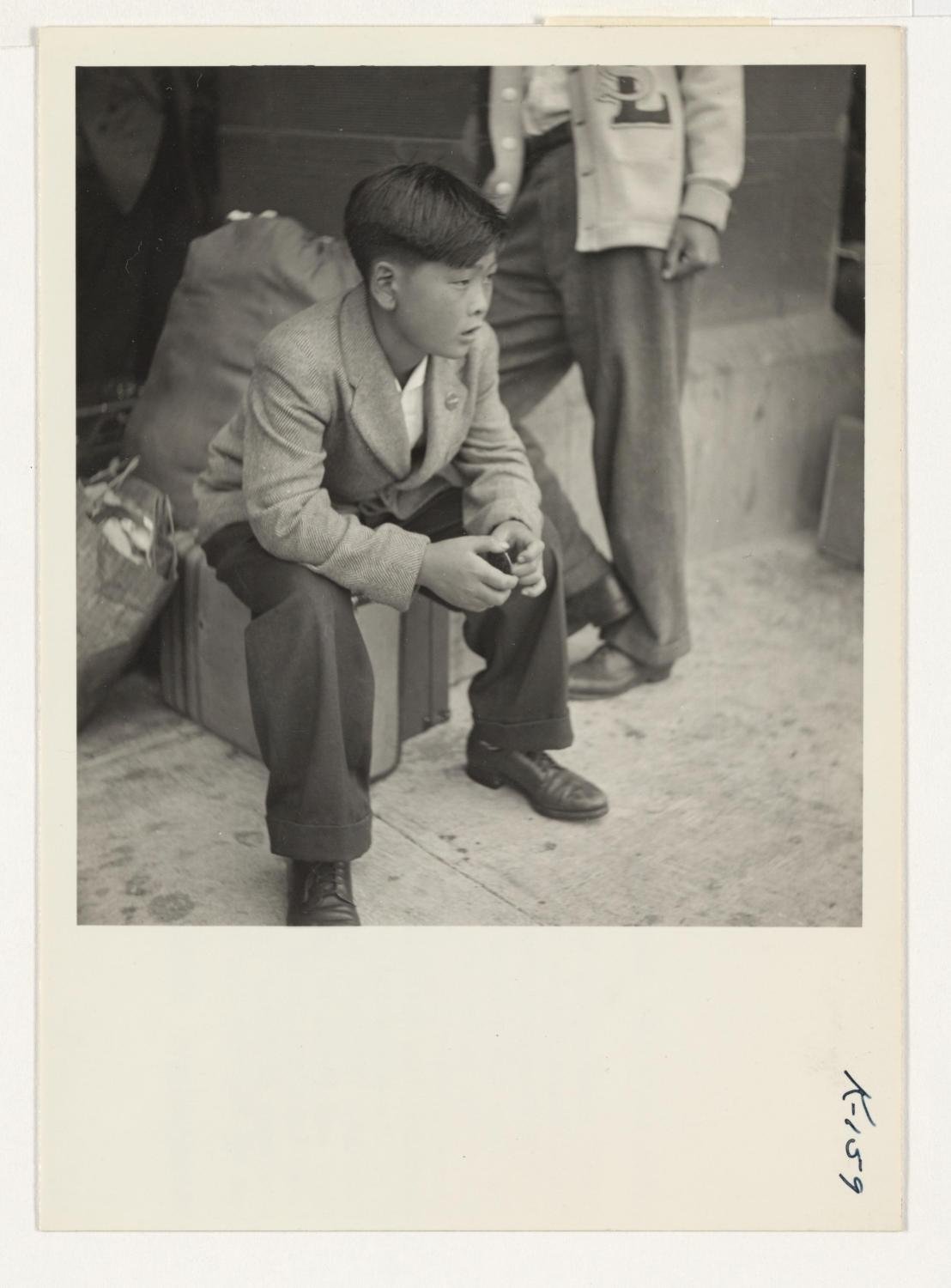
July 9, 1945 - A Japanese Boy waits in San Francisco, returning home via 16th Street Station with 100 additional "evacuees."

Celebration of the Station's 100th Anniversary
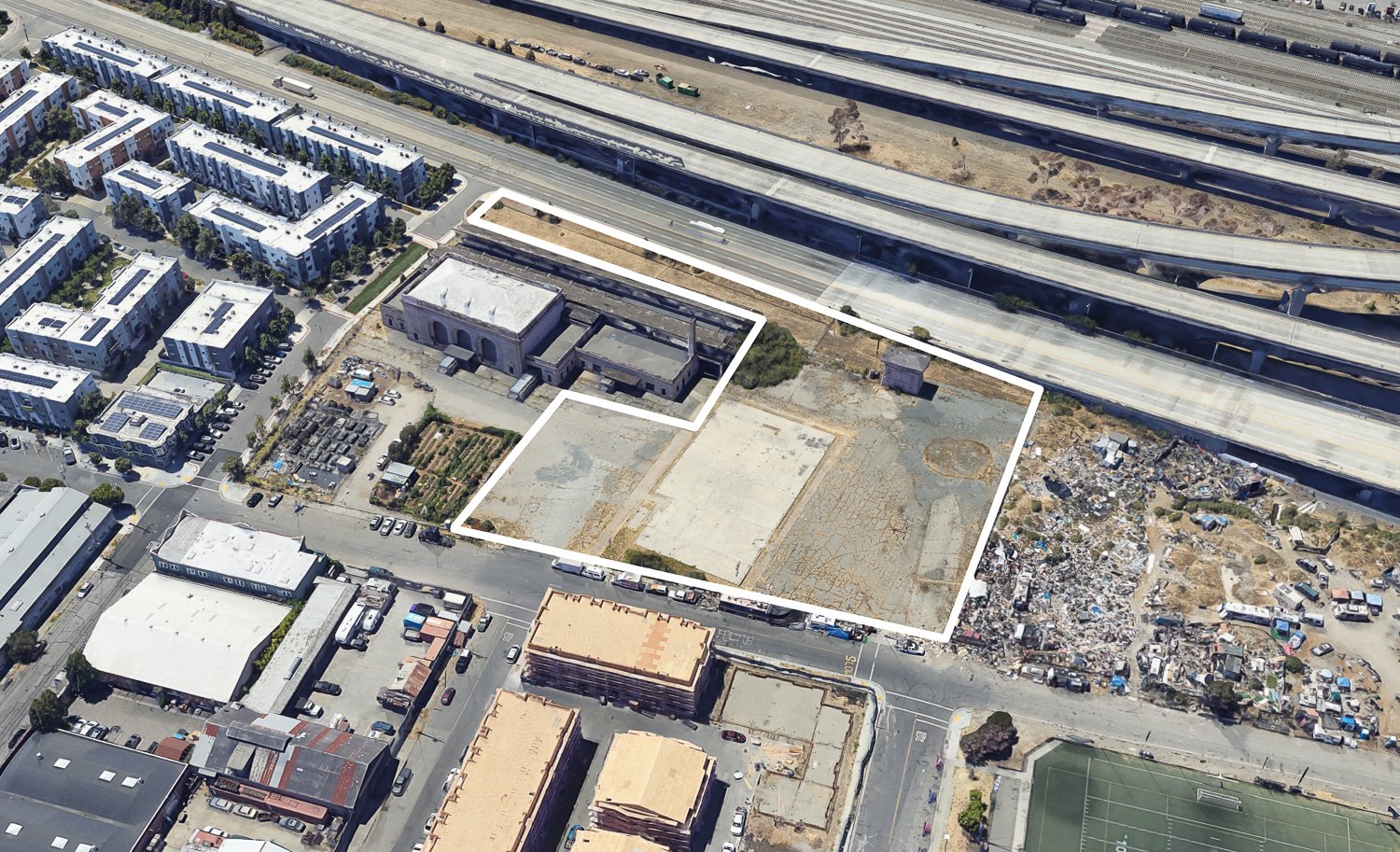
The current owner plans to develop around the station, limiting its reuse possibilities and blocking views of the baggage wing from the street

The current owner plans to develop around the station, limiting its reuse possibilities and blocking views of the baggage wing from the street

Four Pullman porters standing on sidewalk: reverse: “CL Jones, Richardson, J. Simms.” CL Jones is listed as an S.P. porter in the 1933 Oakland Polk's City Directory, J. Simms in 1941. They worked at 16th St. Station. - AAMLO Collection

1912 Realty Union Investment Company map from the Oakland History Center
Videos
Articles
Media Coverage
Events
Oakland Theater Project - Binding Ties
West Edge Opera - Lulu
Station To Station Event - Oakland Just Threw The Best Party (In A Train Station)
Weddings
Radio
Movies
KQED - Evolutionary Blues Resurrects West Oakland's Musical Legacy
SF Curbed - Aerial video of West Oakland: a mesmerizing neighborhood
Music
Oakland Heritage Alliance - What is next for Sixteenth Street Station? - (Fall 2023, page 8)
Oakland Heritage Alliance - African Americans & the Transcontinental Railroad (Spring-Summer 2019)
Oakland North - Oakland’s historic 16th Street station celebrates centennial, new role in community
SFGate - Oakland plowing a path for urban farming on vacant lots (2014)
San Francisco Chronicle - Fear white influx will erase West Oakland history (2013)
San Francisco Chronicle - Dellums' team tours gritty West Oakland (2006)
